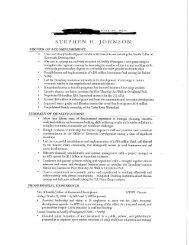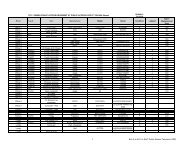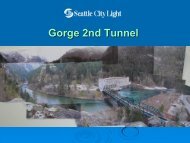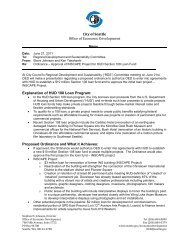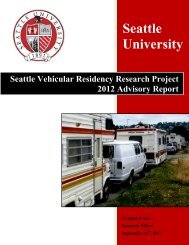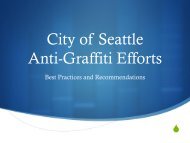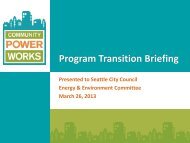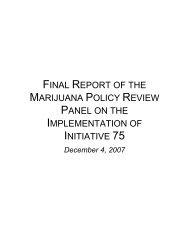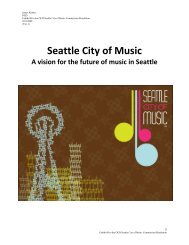2013 Water System Plan, Volume II - Seattle City Clerk's Office - City ...
2013 Water System Plan, Volume II - Seattle City Clerk's Office - City ...
2013 Water System Plan, Volume II - Seattle City Clerk's Office - City ...
Create successful ePaper yourself
Turn your PDF publications into a flip-book with our unique Google optimized e-Paper software.
5.9.12.3 Washdown Equipment<br />
The following are SPU standards for washdown equipment:<br />
1. The source of water to hose bibs must be potable water from the distribution<br />
system.<br />
2. The washdown water piping system must be separated from the distribution system<br />
with an approved backflow prevention device.<br />
The following are guidelines for washdown equipment:<br />
Provide hose bibs or washdown system connections at or near access hatches used<br />
for maintenance to each storage cell. Hoses may be permanently stored at or near a<br />
hose bib, depending on maintenance and security requirements. However,<br />
washdown hoses should never remain permanently attached to the bib to avoid the<br />
potential for cross connections. Bibs and hoses should have quick-disconnect fittings<br />
for ease of maintenance.<br />
For larger facilities, provide washdown hose connections in a pattern such that any<br />
part of the facility can be washed using a 100-foot-long hose.<br />
5.10 CONSTRUCTION<br />
The section describes design considerations for construction of water system infrastructure.<br />
5.10.1 Requirements for Protecting <strong>Water</strong> Mains and<br />
Appurtenances<br />
Any work on, connecting to, or near existing water mains must monitor and take steps to reduce<br />
construction impacts.<br />
5.10.1.1 Conditions Requiring Protection and Protective Measures<br />
Projects that involve roadway construction or repaving, utilities construction, or deep<br />
excavations for structures often create conditions that can affect existing water mains (Table 5-<br />
11). Pipe with lead joints, particularly bell and spigot joints in older mains, is susceptible to<br />
leaking and at high risk of failure if exposed to these activities.<br />
Table 5-11 Common Construction Conditions and Protection Measures for <strong>Water</strong> Mains<br />
Condition Occurs When and Where Pipe Protection Measure<br />
Excessive loads<br />
Settlement<br />
Haul routes for heavy construction equipment<br />
crossing over pipes<br />
Construction site entrances/exits<br />
Paving construction where excavations have<br />
reduced the cover over pipes<br />
Dewatering of soils with higher water content<br />
around or adjacent to pipes<br />
Trench excavations adjacent to water pipes, e.g.<br />
excavations for sewer mains or duct banks that<br />
result in soil loss<br />
Tunneling and other large open excavations<br />
Steel plates in roadway<br />
Concrete pad<br />
Temporary cribbing<br />
Bridging<br />
Pipe relocation<br />
Temporary pipe supports<br />
Shoring of adjacent deeper trenches, as<br />
applicable<br />
Use drilling methods for the installation of<br />
shafts / columns instead of vibratory methods<br />
to the extent practicable<br />
5-64 SPU Design Standards and Guidelines



